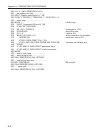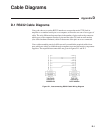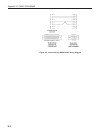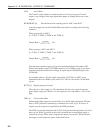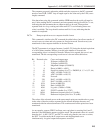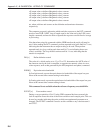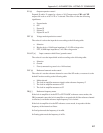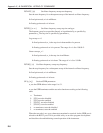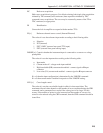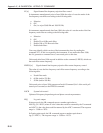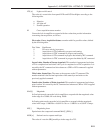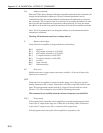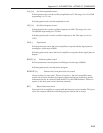
E-6
Appendix E, ALPHABETICAL LISTING OF COMMANDS
<X output value
1
><delim><Magnitude value
1
><term>
<X output value
2
><delim><Magnitude value
2
><term>
<X output value
3
><delim><Magnitude value
3
><term>
<X output value
4
><delim><Magnitude value
4
><term>
<X output value
5
><delim><Magnitude value
5
><term>
etc, where <delim> and <term> are the delimiter and terminator characters
respectively.
The computer program’s subroutine which reads the responses to the DCT command
needs to run a FOR...NEXT loop of length equal to the value set by the LEN (curve
length) command, and must be able to separate the responses on each line for storage
or processing.
Note that when using this command with the GPIB interface the serial poll must be
used. After sending the DCT command, perform repeated serial polls until bit 7 is set,
indicating that the instrument has an output waiting to be read. Then perform
repeated reads in a loop, waiting each time until bit 7 is set indicating that a new
value is available. The loop should continue until bit 1 is set, indicating that the
transfer is completed.
DD [n] Define delimiter control
The value of n, which can be set to 13 or 32 to 125, determines the ASCII value of
the character sent by the lock-in amplifier to separate two numeric values in a two-
value response, such as that generated by the MP (magnitude and phase) command.
ENBW[.] Equivalent noise bandwidth
In fixed point mode, reports the equivalent noise bandwidth of the output low-pass
filters at the current time constant setting in microhertz.
In floating point mode, reports the equivalent noise bandwidth of the output low-pass
filters at the current time constant setting in hertz.
This command is not available when the reference frequency exceeds 60 kHz.
EVENT [n] Event marker control
During a curve acquisition, if bit 13 in the CBD command has been asserted, the
lock-in amplifier stores the value of the Event variable at each sample point. This can
be used as a marker indicating the point at which an experimental parameter was
changed. The EVENT command is used to set this variable to any value between 0
and 32767.



